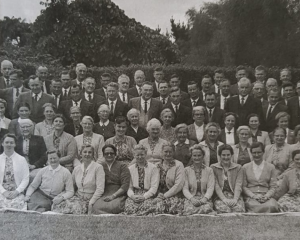Anadarko says it is making good progress drilling its wildcat well in deep water off Taranaki and is due to finish work by the end of the month.
Drilling was the target of a protest flotilla when it first started work 160km off the coast in late November but a spokesman said it had not delayed work which is costing around $1 million a day.
Greenpeace said it was likely to again target the massive drill ship, the Noble Bob Douglas, possibly as it makes its way to its next drill site off the east coast of the South Island.
The Taranaki well, in 1520m-deep water, will reach a depth of just over 3km below the sea bottom.
Anadarko spokesman Alan Seay, who was on board the vessel yesterday, said it was in the final stages of drilling.
"We're looking to leave here at the end of the month to head towards the Canterbury prospect but it's all gone very well up here."
The prospect is in new territory and the company has opted not to
release details of the depth of the hole and what signs have been encountered. "Because this is what's known as a 'tight hole', so I can't give away details and can only speak in generalities and say the progress is good and broadly in line with what we originally set ourselves," he said.
There were roughly 200 workers aboard the vessel at any one time,
including about 90 New Zealanders.
"It's a real United Nations as a lot of these projects are," Seay said.
Sea conditions had been good with weather causing no disruption.
The Noble Bob Douglas is 229m long and 36m wide. Six thrusters hold the ship in position, which is pinpointed by satellite. "Emphasis on safety is huge, before you go out to the vessel when you're out here. It's absolutely front and centre."
Drilling fluid is returned to the ship to be recycled and cuttings washed before being discharged overboard.
The exploration well will be plugged temporarily or permanently when drilling has finished.
Texas-based Anadarko was a 25 per cent shareholder in the Macondo well which blew out in the Gulf of Mexico in 2010, killing 11 workers and leading to the United States' worst oil spill. Anadarko agreed to pay US$4 billion in compensation.
Seay said it did not have blow-out capping stacks here but the ship had containment equipment that "could be used in the highly unlikely event that something went wrong".
Greenpeace energy campaigner Steve Abel said while the protest
before Christmas didn't halt drilling, it did raise awareness about the danger of drilling in deep water off the New Zealand coast. He said the country was better off investing in sustainable technology and businesses than on risky activity.
New laws permitted a 500m
exclusion zone around oil exploration vessels and Seay said the proximity of the protest flotilla before Christmas was a distraction.
"That zone is put in place for very good safety reasons. When you've got someone inside that zone it required us to divert resources to keep an eye on them. It was a concern but it didn't hold up our operation."
The vessel falls outside the Taranaki Regional Council's jurisdiction and Maritime New Zealand monitors any oil discharges. Spokesman Steve Rendle said staff had visited the vessel before drilling started and were likely to repeat the visit before it finished.
There had been no reports of problems from the vessel, he said.
Work Safe inspectors have also been aboard the Noble Bob Douglas twice, the first visit for familiarisation and the second a routine inspection.
"No issues of concern were found," a spokesman said.
Seay welcomed Shell's commitment to drill in the Great South Basin.
"I think that's showing greater
interest in New Zealand. These are no small commitments to bring equipment like this out to New Zealand ... I think it shows a growing confidence in what might be here. A discovery of any scale would be great news for New Zealand."
"We feel that it's gone very well in the progress that we've made."
- Grant Bradley of the NZ Herald












